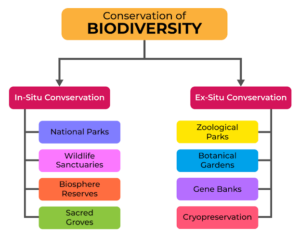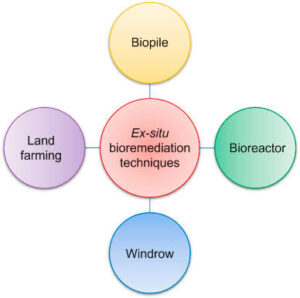Back to: Botany 500 Level
My ever-curious Afrilearn Champion, how you dey today?
You know say every time you show up for class, you dey prove say you care about your future and the future of our environment. Today’s gist na one wey go make you wiser as we go talk about Ex-situ and In-situ Conservation Strategies. You go see how both big government bodies and small local communities dey protect our precious plants and animals using different methods. This na real-life knowledge wey go make you a better environmental protector. Come close, make we reason am like padi.
Ex-situ and in-situ strategies
Have you ever tried to save a dying flower by either moving it indoors or protecting it where it dey grow? That na exactly how conservation strategies work. Some plants and animals need to stay in their natural habitat to survive. Others need to be moved to safe places like botanical gardens or zoos to keep them alive. These two ways of protecting living things na what we call In-situ and Ex-situ conservation.

In-situ Conservation (Protecting Life in Their Natural Home)
The word “in-situ” just mean “on site” or “in place.” This strategy means protecting plants, animals, and ecosystems right where they naturally live. It allows species to continue growing, reproducing, and evolving in their original environment.
Examples:
- National Parks and Game Reserves – Like Yankari Game Reserve in Bauchi and Gashaka-Gumti Park in Taraba where animals like elephants and plants like baobab dey protected.
- Sacred Forests and Community Forests – Some villages protect sacred groves and forest zones without cutting trees or hunting animals inside.
- Forest Reserves – Like Omo Forest Reserve in Ogun State wey protect rare tree species and wildlife.
Benefits:
- It supports natural processes like pollination, seed dispersal, and adaptation.
- It helps whole ecosystems survive, not just single species.
- It’s cost-effective and respects local traditions.
Ex-situ Conservation (Protecting Life Outside Their Natural Home)
“Ex-situ” mean “out of place.” This strategy involves taking species away from their natural environment and protecting them in a controlled setting.
Examples:
- Botanical Gardens – Like the University of Ibadan Botanical Garden, where endangered plants are grown for study and protection.
- Seed Banks – Where seeds of important crops like cowpea, maize, and sorghum are stored to prevent extinction.
- Zoos and Aquariums – Where rare animals like lions or crocodiles are bred and cared for.

Benefits:
- Saves species that are nearly extinct in the wild.
- Useful for research, education, and breeding.
- Helps reintroduce species to the wild when safe.
Combining Both Strategies
Sometimes, using both in-situ and ex-situ together gives the best result. For example, seeds can be kept in banks (ex-situ) while efforts are made to restore their natural habitat (in-situ).
Summary:
- In-situ means conserving species in their natural home.
- Ex-situ means conserving species outside their natural environment.
- Both are important for preserving biodiversity and ensuring survival of endangered species.
Evaluation:
- What is the difference between in-situ and ex-situ conservation?
- Mention one example of each strategy in Nigeria.
- Why is it important to protect species using both methods?
Today you don learn how smart conservation strategies fit help save our plants and animals. As you dey grow, remember say the future of nature fit rest on your shoulders—and you get the strength to carry it! With Afrilearn by your side, you fit achieve anything. See you in the next lesson, champ!
